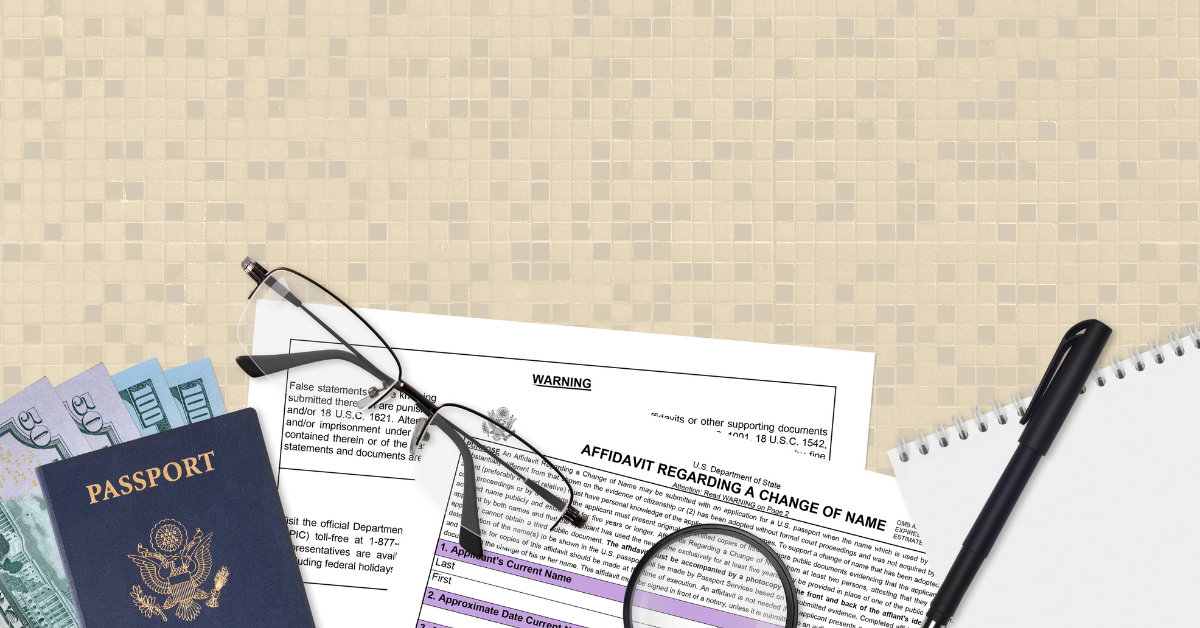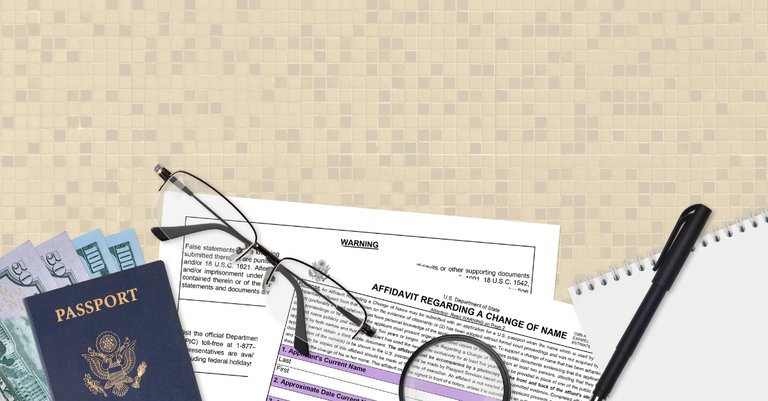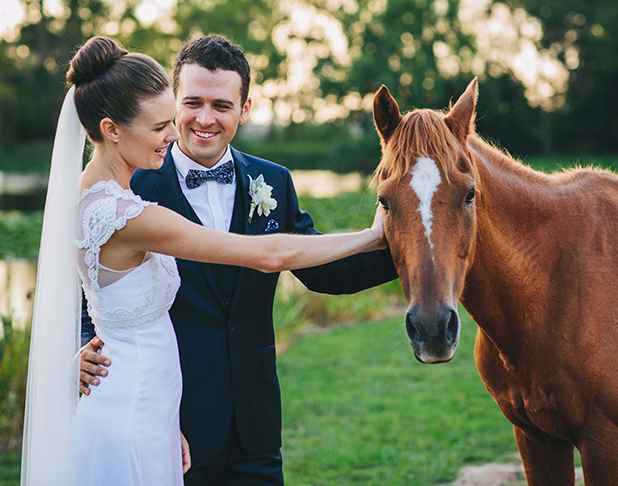Getting married is a significant milestone in one's life, but with it comes a host of changes and decisions. One such decision that many women face is whether or not to change their last name after marriage. For some, the decision is an easy one, while for others, it can be a complex and emotional process. There are several reasons why women choose to change their name, such as tradition, a sense of unity with their partner, or to avoid confusion. On the other hand, there are also compelling reasons why women decide to keep their name, such as maintaining their professional identity or honoring their family name. In this blog post, we will explore the various factors to consider when deciding whether to change your name after marriage and provide helpful tips and resources to guide you through the process.
After getting married, there are primarily two methods available for altering your name:
1. If you decide to take the do-it-yourself route, you will need to set aside a significant amount of time to reach out to each organization, familiarize yourself with their name-change procedures, fill out any necessary forms, present supporting documents, and repeat the process for each of the 25 or more entities on your list.
2. If you find the prospect of spending your lunch breaks researching and filling out paperwork unappealing, you may want to consider using a service like Easy Name Change. With this service, you can select the companies and organizations on your list, and they will provide you with customized, easy-to-follow instructions, as well as a collection of pre-prepared notifications, such as letters, emails, and company forms. All you need to do is attach a copy of your marriage certificate, sign the forms, and send them out. However, it is important to note that regardless of which approach you choose, you may still need to visit certain places in person.
We have compiled some of my best hacks and tips to help you save time and reduce the likelihood of frustration during the name-changing process. Additionally, we will discuss the various options that are available for your new name.
In Australia, what does it entail to alter my surname after getting married?
Following marriage, you have the option of adopting your spouse's last name and being recognized by it.
However, you are also entitled to keep your existing surname, even after getting married.
In the event that you decide to take on your partner's surname, or create a new hyphenated or double-barrelled surname that includes both of your surnames, you are essentially adopting a new surname. It's essential to note that this doesn't constitute a formal change of name under the law, and, as such, you won't be required to register the change through your State or Territory's Births Deaths and Marriages office.
If you choose to assume your spouse's surname following your wedding, you'll need to notify all of the companies, organizations, and institutions that you have dealings with and provide them with a copy of your official marriage certificate obtained from the Births, Deaths and Marriages (BDM) office, where necessary (this certificate differs from the ceremonial certificate provided on your wedding day).
In addition, depending on each organization's protocols, you may be required to complete a form, draft a letter or send an email to facilitate the change of your accounts, records, and identification under your preferred new surname.
Although this process is often referred to as "changing your name," it doesn't necessitate filing an application for a legal name change or any other legal procedures.
Some of the common entities that you will need to notify include the Department of Motor Transport (for your driver's license and vehicle registrations), passport office, banks, Australian Taxation Office (ATO), Medicare, superannuation providers, insurance companies, loyalty programs, subscriptions, and road toll operators, among others.
What are my alternatives for changing my surname after getting married?
There are three alternatives for changing your surname after marriage, and you will need to present your official BDM marriage certificate as evidence. Additionally, it's not necessary for your spouse to have the same surname as you.
1. One option is to adopt your spouse's surname. As an illustration, if Michelle Jones and Andrew Williams were married, Michelle could change her name to Michelle Williams, and Andrew could change his name to Andrew Jones, or both could adopt a hyphenated double-barrelled surname.
2. Another option is to create a double-barrelled surname by combining both surnames, which can appear in either order and be separated by a space or a hyphen. For instance, if Michelle Jones and Andrew Williams were married, they could choose to use the surname Jones Williams or Williams Jones as their new surname, and either of them or both could change their surname in this way. Additionally, they could opt for a hyphenated version of the double-barrelled surname, such as Jones-Williams or Williams-Jones.
3. A third option is to use both your original/maiden last name and your spouse's last name in different situations. For instance, Michelle may prefer to continue to use her maiden name professionally, but update her passport, driver's license, and bank accounts to include her spouse's surname, using both names interchangeably in different contexts. However, it's important to be aware that this option may have some complications, such as navigating international travel, tax obligations, and home or business ownership.
Please be aware that the policies on double-barrelled surnames vary among the state/territory offices of the Department of Transport/Roads/Motor Vehicles, and the answer you receive may depend on the individual you speak with. Some couples have been told that a double-barrelled surname option is not allowed.
To avoid any confusion, it's advisable to email the department before you visit in person. This way, you can obtain written confirmation that the change is possible. It may require two emails, as the first response to an email that mentions "name change" often triggers an automated reply. You may need to follow up to get a personal response.
How can I change my last name after marriage to something completely different?
If you wish to change your surname to a completely different name after marriage, you would need to go through the legal process of changing your name via the Registry of Births, Deaths, and Marriages (BDM) in the state or territory where you were born. This process allows you to change any part of your given name/s as well.
If both you and your spouse want to change to an entirely new last name, it is recommended that one of you legally change your surname before the wedding. Then, the other spouse can use their official BDM marriage certificate to assume their partner's new surname.
Is there a time limit for changing my last name after getting married?
Although many people choose to change their last name within a few months of getting married, there is no specific time frame requirement for a name change. It's possible to change your surname from your birth name to your married name on the day your BDM marriage certificate arrives or even a decade after your wedding day. Moreover, you can choose to revert back to your birth surname at any time, irrespective of your marital status. Once you decide to change your last name, it becomes your responsibility to update all your accounts, memberships, and identification documents to reflect the new name.
If you intend to travel within 2-3 months of your wedding, it's advisable to use your original/maiden name on all travel documents (such as plane tickets, visas, and accommodation bookings) and keep your identification documents the same until after you return. This is because some couples have faced challenges in proving their married names without updated identification, and airlines often impose high fees for name changes.
What are the required documents for changing my last name after getting married?
To change your last name after marriage, you will need your official marriage certificate issued by the Births, Deaths, and Marriages (BDM) office of the state or territory where you got married. This certificate serves as proof of your eligibility to assume your spouse's last name. Keep in mind that most organizations, businesses, and government agencies you update your name with will require a copy or certified copy of your BDM marriage certificate as well.
Can I use the marriage certificate I received on my wedding day to change my last name?
The marriage certificate received on the wedding day is a presentation or commemorative certificate and is not accepted as an official form of identification. An official Births Deaths and Marriages (BDM) marriage certificate, obtained after the paperwork is lodged and processed by the BDM in the state or territory where the marriage was solemnised, is required as evidence of the right to take the spouse's last name. The process of obtaining the BDM certificate can take around 4 weeks.
It's important to remember that you won't receive an official BDM marriage certificate automatically from the Births, Deaths and Marriages (BDM) offices. You'll need to apply for it yourself through various means such as online, via a form through the post, or in person.
How to change your last name after marriage?
The process of changing your last name after marriage is similar whether you choose to do it yourself or use a service like Easy Name Change.
To change your last name after marriage, you need to order your official BDM marriage certificate from the state or territory where your marriage was solemnized, get photocopies of your photo ID under your old name, and obtain new photo ID in your new name. Then, you can either use a name change kit or DIY by making a list of each institution/company where you want to change your last name and following their name change procedures. Make a note of the procedure and keep track of the information you send them to follow up if necessary.
Visiting 2 to 3 places in person is unavoidable if you want to change your last name after marriage. You will need to bring your official marriage certificate for your driver's licence, larger banks, and Centrelink.
Here are some of the commonly used company procedures.
Driver’s Licence
To change your name, you must request it in person, and some states require special forms. Changing your driver's license can be useful as it can serve as proof of your name change when dealing with other companies. Changing your driver's license is typically free, but your old license must be surrendered. You need to present your original name change document and current driver's license, and in some cases, a new photo will be taken. If you cannot present a valid license, you may need to provide other identification documents and pay a replacement fee.
Australian Passport
To change your name on your passport due to marriage, you need an official BDM marriage certificate or BDM relationship certificate and your current passport. It is recommended to change the name on your driver's license before applying for a new passport. If you were married overseas, you will need to provide your foreign marriage certificate with an approved translation and your current passport. The passport will be updated with your new name, but the expiry date will remain the same. If your passport has less than 2 years of validity, you need to apply for a 10-year replacement passport and pay full fees. The application must be made online and applicants must also lodge their application at the post office in person.
It is recommended to acquire a new driver's license prior to changing your last name on your Australian passport, as it may serve as supplementary evidence that could be requested.
Medicare Card
To change your name on your Medicare card, you can call 132 011 and provide your wedding certificate registration number for an instant update. Alternatively, you can send a letter or email, but this method takes an additional four weeks. Your Medicare number stays the same, and a new card arrives in about three weeks. You and your spouse can share the same card using the Medicare Transfer Form, which can be completed and sent in at the same time as the change of name process.
Australian Tax Office (ATO)
You can update your name with the Australian Taxation Office (ATO) online, over the phone, by mail, or in person. If you have the ATO linked to myGov, you can update your name by clicking on the 'My Profile' > 'Personal Details' links and providing your marriage certificate registration number. You can also update your name over the phone by calling 13 28 61 during business hours and providing your Australian documents information. For updating your name by mail, you need to fill the 'ATO Change of Details for Individuals' form and provide certified copies of the documents listed on the form. Alternatively, you can visit an ATO shopfront with your BDM marriage certificate and photo ID to update your name on the spot.
Your bank
To change your name with larger banks, you must provide your BDM marriage certificate in person and sign in their presence. Smaller banks may accept certified copies of your marriage certificate and photo ID via mail. Some mortgages require a statutory declaration to be signed.
Easy Name Changes Top Tips
1. To change your name after marriage, start by obtaining an official marriage certificate from Births, Deaths and Marriages (BDM).
2. Get photo ID in your new name as soon as possible, and make photocopies of your photo ID under your old name.
3. Plan a day or two to visit the necessary places in person to get all your name change notifications done at once.
4. Set a deadline for your name change, and aim to get all your accounts, memberships, and paperwork changed within a month of starting.
5. If it seems too time-consuming and confusing, consider using services like Easy Name Change, which provide ready-to-send name change notifications, forms, and procedures.























